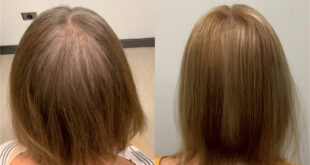 Unless you suffer from multiple sclerosis, chronic fatigue syndrome, fibromyalgia, or traumatic brain injury, dysautonomia is probably a word that you’ve never heard of. The problem with that, is that the symptoms of dysautonomia are probably the most difficult to deal with in when it comes to chronic illness. It’s even a condition that can exist on its own.
Unless you suffer from multiple sclerosis, chronic fatigue syndrome, fibromyalgia, or traumatic brain injury, dysautonomia is probably a word that you’ve never heard of. The problem with that, is that the symptoms of dysautonomia are probably the most difficult to deal with in when it comes to chronic illness. It’s even a condition that can exist on its own.
The symptoms of dysautonomia affect a wide variety of organ symptoms.
Here are some of the symptoms:
Extreme fatigue
Heart palpitations
Brain fog
Migraines
Frequent dizziness and feinting
Extreme spikes in heart rate
Severe abdominal discomfort
Excessive sweating
Anxiety and panic attacks
The symptoms can be quite severe. Especially if you are a patient with cardiovascular symptoms, many people with dysautonomia get a full work up on their heart only to find out that there’s nothing wrong with it. With a rare illness like dysautonomia, this leads many patients to be dismissed with a psychosomatic disorder.
Because of the nature of these symptoms, dysautonomia is often considered an invisible illness. A diagnosis of dysautonomia is usually given in conjunction with another condition like Multiple sclerosis. However, certain conditions like POTS (postural orthostatic tachycardia syndrome) and neurocardiogenic syncope are diseases that are solely related to dysautonomia in general.
How Do I know if I have Dysautonomia?
The reason that cardiac testing is negative with dysautonomia is because the illness is a neurological problem. It reflects a problem with the branch of the nervous system that regulates all of the body functions that are on autopilot like your heart beat, blood pressure, digestion, etc.
In conditions like POTS and syncope, the brain is making an inappropriate response to its relationship with gravity. That’s why someone may feel feint, dizzy, or light headed when they go from sitting to standing.
The only reliable test for dysautonomia for POTS and syncope is something called a head up right table-tilt test. When are placed in an angle on a table while their heart rate and blood pressure are monitored. During this time, patients are likely to experience a surge of their primary symptom which leads it to be very stressful.
Can It Be Fixed?
Dysautonomia is a challenging condition to treat whether it’s a primary dysautonomia like POTS or syncope, or a secondary dysautonomia to concussion, MS, or chronic fatigue. Some people have severe cases where they have to be moved in a wheel chair to limit their movement, while others can walk around looking like they’ve never been sick.
While some of the conditions associated with dysautonomia are incurable, there are therapies available that can help make a patient with dysautonomia more functional. In our office we have seen patients respond well to a combination of Atlas Correction and vestibular rehabilitation.
Below are a couple of case studies on 2 patients with POTS that we’ve seen this year:
Case 1
This patient started with us back in June 2017. She got hit with dysautonomia after coming back from a trip where she had a bout with malaria. She’s had times where the her dizziness and fatigue were so bad that she had to be pushed in a wheelchair to get around. Her heart rate is consistently over 100 beats per minute with routine standing. When she came to our office her biggest problem was that whenever she stood up from seated, she would start to get dizzy, feel feint, and sometimes black out. This made it difficult for her to go to church, take a shower, and other really basic activities of normal living.
She showed dysfunction in her neck at the atlas vertebra and some past history of whiplash. She also had a large amount of difficulty just following moving objects with her eyes alone and it made her vision blur repeatedly.
We started by performing a correction of her Atlas and after her first visit she was able to go from seated to standing without having her vision go dark and pass out.
As her cervical spine maintained the correction, we began doing exercises for her eyes and vestibular system to help her brain orient itself to the environment accurately again.
As she performed the exercises more frequently, she was able to track moving objects better and she was able to tolerate standing for 15-20 minutes without feeling tired or feint.
Case 2
After case 1 got really great improvements, she referred her mother to our office to see if we could help her in a short amount of time. Case 2 also had dysautonomia throughout her life. She had it many years ago and was frequently dizzy and had difficulty with standing and fatigue. She went into remission for a number of years when the symptoms started to come back. She also got into a car accident which seemed to intensify the symptoms again. She flew in from North Carolina to be seen and evaluated.
We knew we would only be able to work with her for a week at a time so we opted to do some more intensive care seeing her for multiple sessions in a day initially. Fortunately, being fast responders to NUCCA corrections seems to be a family trait.
We identified problems in the upper neck as well, and while her eyes were not moving as poorly as case 1, she had some issues tracking objects certain head positions would cause vertigo.
After her initial visits, she was able to maintain better balance and bend forward without getting dizzy. She also started to notice improvements in pain throughout her body.
On her third time visiting, she was able to jump and move with significantly less feeling of imbalance.
Dr. Jonathan Chung is a Doctor of Chiropractic who focuses on Structural Correction and is primarily concerned with Structural Shifts of the spine. He graduated from the University of Central Florida with a B.S. in Microbiology and Molecular Biology. Dr. Chung then went on and received his doctorate from Life University’s College of Chiropractic. Dr. Chung is certified in pediatrics from the International Chiropractic Pediatric Association, and is a Structural Chiropractic Researcher who has been published in scientific peer-reviewed journals. Read more from Dr. Chung at chiropractorwellington.com/blog
561.247.0044
420 STATE ROAD 7, ROYAL PALM BEACH, FL 33411
Check Also
The Latest Technology With Hearing Aids
Many modern electronic devices these days come equipped with Bluetooth technology. This feature lets you …
 South Florida Health and Wellness Magazine Health and Wellness Articles
South Florida Health and Wellness Magazine Health and Wellness Articles




